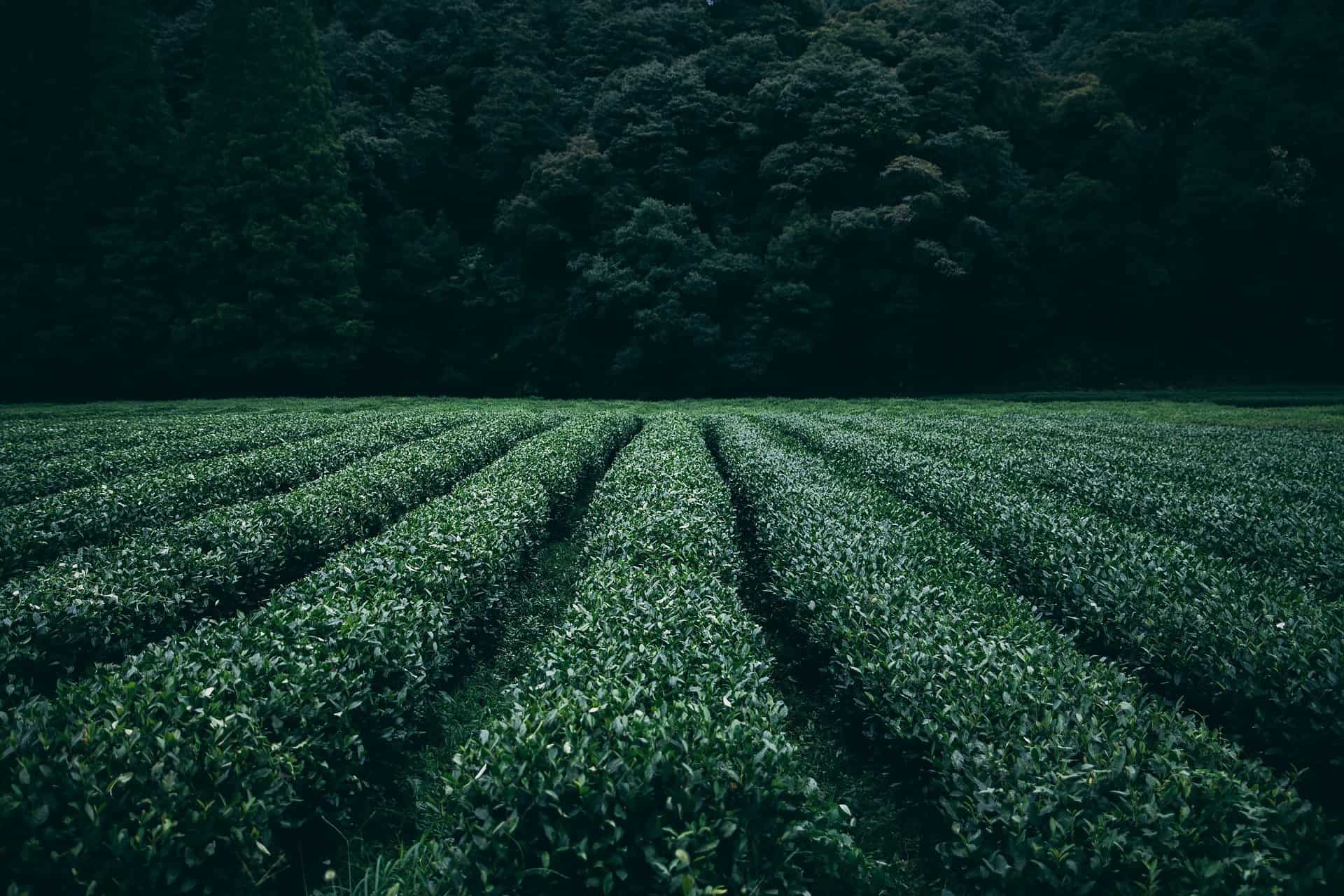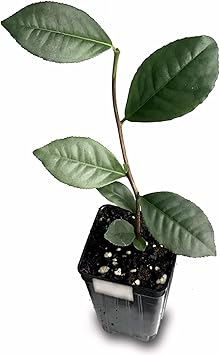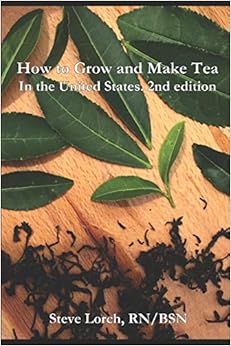Tea plants were first used for health, healing, and energy. Growing and harvesting tea leaves from your own garden is rewarding and fun. Getting your hands in the earth is one of the most soothing things to do. Buying tea is one thing. Growing your own tea is a rewarding experience.

Growing tea or growing herbs
So today we need to clarify that tea is tea! Tea comes from one plant the Camilla Sinensis and only that plant. All other flowers, spices, herbs, and more that we steep in hot (or cold) water are a tisane. The word tisane is actually french and means tea without tea. Some also believe that the tisane is green and means a medicinal drink with barley soaked in water. Today we will talk about growing tea.
We must enter into the age-old debate of tea or tisane. While most of us like to combine products into one main product category, like:
- Onesie – Babies one-piece suits owned by Gerber
- Crock-Pot – owned by, you guessed it, Crock Pot
- Chapstick – a brand name owned by Pfizer
- Kleenex – owned by Kleenex
- Q-Tip – started out as Baby Gays and is now owned by Unilever
The list can go on for a very long time. I am sure you can even think of some words that we use every day that are, brand names.
Using a brand name as a generic term is called proprietary eponym or generic trademarking. We all do it.
Ever wondered where tea comes from? Use the tender tips from the new growth of the Camellia sinensis var. assamica to encourage new growth and to make your own cup of tea.
Growing your own tea
Can you grow your own tea? It is possible. Some areas are easier for growing than others. Within the United States, the best zone to grow a tea plant in is Zone 8. Zone 8 has mild winters. The lowest temperature of Zone 8 averages is around 10-20 degrees Fahrenheit. The warm summer climates with the cooler evenings make it the best zone for growing tea.
The states that are in Zone 8 are:
- Florida.
- North Carolina.
- South Carolina.
- Virginia.
- Maryland.
- Washington, D.C.
When to plant is also important:
- Zone 7 plant in the spring
- Zone 8/9 plant in the fall to spring
Tea plants can also be grown in zones 7 and 9 as well. Tea plants are to be cold hardy and easy to grow. But this is not always the case. Like any living plant, a tea plant needs plenty of love and attention, especially if you are not in the hardy zones.
Tea plants need part sun and part shade. Your tea plant needs to be protected from the afternoon sun. They do not like the cold so need brought inside during the colder times and evenings. While the tea plant can tolerate full sun it will need plenty of water. Without an ample supply of water, the plant may brown or even die. A rule of thumb for growing tea plants in morning sun and afternoon shade.
While tea can be grown indoors it has the best luck outdoors in the zones above. If you want a thriving bushy plant, then outdoors is best. Unless you own a greenhouse, then you are in luck.
A tea plant can grow 10-15 feet tall and approximately 10-15 feet wide. They can become very large and almost appear to be a hedge. If you are using your tea for harvesting (like most of us) you will want to keep your tea plant trimmed back. Keep a tea tree trimmed down so it is an accessible height.
Can you grow tea in cold climates?
Knowing what variety of seeds or trees you have will determine if you can grow them in your area or not. Most tea seeds or plants in the United States are a cross between the Chinese tea variety (Camellia sinensis var. Sinensis) and the Assamicas variety (Camellia sinensis var. assamica). The Sinensis variety is more tolerant of cold. The Assamicas do not like frost but love a more wet area. They are also a very large variety that can grow up to 5 feet. The one that you buy may be a cross between the two and grow well in zones 8 and above.
The tea you harvest from either of these plants will be the same, one is hardier than the other.
What does a tea plant need to grow?
Seeds vs Plants – This depends on you and your green thumb. It also depends on your growing season and the time that you have.
Seeds
Seeds will take you through the germination process.
- Soak the seeds in water for 24-48 hours. Speeding up germination
- Placing seeds in vermiculite – in a warm sunny location covering seeds 1 inch
- Waiting – about 6-8 weeks for the plants to germinate and emerge
- Misting – during those 6-8 weeks you will want to mist the seeds (not soak)
- Timing – make sure the seeds are fully germinated before you plant
- Pot – place seedlings into pots to grow and get strong
- Plant – now it’s time to plant those seedlings, now plants
Plants
Buy a plant – very simple, not as rewarding as growing one from seed.
Both are rewarding, one is less taxing. If you are a first-time grower. I’d say do both, why not and have fun with it. It’s so rewarding to see your plants grow either way.
Things to consider
- Soil – Tea plants are not much different than most plants. They do not like to stand in water. You will need soil that allows good water drainage. Staring out with good soil, compost, and fertilizer. Tea plant soil needs to be acidic. The PH level for tea that works well is 4.5 to 6 PH. The soil needs to stay acidic so from time to time you will need to add a fertilizer that is more acidic. Also, look for fertilizers that are high in nitrogen. Nitrogen helps create the tea leaves you will want to harvest.
- Temperatures – Making your tea plant comfortable is the most important factor. Good soil and temperature are important. Temperatures between 55 and 90 degrees Fahrenheit make a tea plant grow to its best potential. Temperatures too high or too low can cause your tea plant to be stressed (too hot) or dormant (too cold). You can also use shade to help your plants through those hot afternoon sunshiny days. A trick I often use to insulate my plants is to put a nice soil covering of pine needles all around the plant. This keeps the soil moist, protects from insects, and keeps the plant warm. Frost will cause great harm and snow will end the life of your tea plants.
- Raised Beds – Create your raised bed with tea in mind. Remember that tea needs sun and shade. Can you cover your tea beds to give your tea plants protection? Adequate acidic soil with plenty of drainages. Depending on how many tea plants you plan to grow, leave enough space for each plant to branch out and grow. Prune and shape your plants to allow for easier harvesting. Harvesting can begin after three seasons of growth.
- Pots – Give your tea plant room to grow but realize you will need to re-pot your plant as it grows and grows and GROWS. While tea plants can become pot bound it will not hurt the plant as much as other plants. When you do re-pot a plant you can also trim the roots. You can take off up to 1 inch of roots from the outside of the root ball.
- Greenhouse – Anyone lucky enough to have a greenhouse? I’m jealous if you do, this is a dream of mine. Growing tea plants in a greenhouse allow you to mimic the perfect conditions year-round. Protecting the plants from both harsh nature and pestilence. The perfect lighting is bright and indirect. Keeping temperatures around 70 degrees until the flowers form. After the flower forms, you can reduce that temperature to no lower than 50 degrees.
- Ground – You will want to dig a hole that is twice as wide as the root ball. The root ball should not be buried deep. Keep the root ball at the level of the ground. Fill the hole with the soil you removed and mix in some aged compost. During the first part of the tea plant’s growth, you want to mulch the ground with leaves, compost, or pine needles. Ground covering keeps the ground around the tea plant safe. Safe from any cooler than expected night temperatures.
- Space – You will need approximately 2-3 square feet of space for your plant to thrive. If you are planting the Assamica tea plant you will need a bit more space. This is a larger tree (not suggested for non-tropical areas) and will need up to 5 square feet of space.
- Lighting – as discussed earlier tea plants like sun and shade. This is why a lot of tea plantations are in the mountains. Mountains offer a variety of strong sun and that important mountain rain. Growing your own plants you will want a good variety of strong sun and shade.
- Water – during the formative first couple of years make sure to water your plant 2-3 times a week. Make sure the plant has enough water and plenty of drainages. Once your tea plant established itself you can water it less often but be sure not to water too much or too little. Both can damage the roots of the plants. Remember tea plants do not like wet feet. Good drainage will help with water runoff.
Remember your tea tree originated from subtropical conditions. The best way to keep your plant happy is to keep it as close to those ancestral conditions as possible. Those conditions are humid with frequent rain, sunshine, and rich acid soil that drains well. Do all that and you will have one happy producing tea plant.
Can you grow tea in the United States? This book will show you the yes and the no's to growing tea.
Harvesting tea plants
The taste of your tea will depend on many factors. How it grew, the water and soil used, and of course the plant itself.
Tea plants take time to mature. It will be a few years (3) before you should harvest anything from your plant. Harvesting times are in the spring and summer and can occur a few times.
Tea plants go dormant in the cold winter months and this is not a good time to harvest. Look for bright green leaves.
The leaves you pick should consist of the top few leaves, the bud, and the stem. These are the youngest part of the tea plant. Not sure what to look for? Look for unopened buds and leaves that have white fibers. Pick those. You can also harvest the leaves by yourself.
Harvest your leaves on a bright sunny day, early in the morning. Gently pluck the leaves. Take your finger and thumb and gently pull the leaf from the stem.
Once harvested there are still a few factors that will shape the flavor of your tea.
There are a couple of methods for processing your leaves. Once harvested the tea leaves need to dry. This is done in several ways.
- Laying out overnight
- Laying out in the sunlight
- Using a dehydrator
- Using an oven
You can roast your leaves in a frying pan to give them a slightly roasted flavor. You can also steam them on the stovetop in a steamer basket.
Dry the leaves once again, in the sun. Once dry you can add them to an airtight container and you are ready to use them for your tea.
Harvesting for Green tea
- Pluck the youngest leaves and buds
- Dry them off from any morning dew or watering
- Let them dry in the shade for a few hours
- Steam them on the stovetop
- Spread onto a baking sheet and bake at @250 for 20 minutes
- Cool and Store
Harvesting for White tea
- Pluck young leaves before they open
- Dry in the sunlight all-day
- Roast them for a couple (2-3) minutes on the stove
- Cool and Store
Harvesting for Oolong tea
- Pluck the fresh leaves from your tea plant
- Dry in the sun for up to an hour (remember this is what changes your flavor)
- Bring inside and dry for up to 10 hours mixing occasionally
- Dry leaves in the oven for 10-12 minutes @ 250 degrees
Harvesting for Black tea
- Roll the leaves with your fingers until they darken
- Spread them onto a cookie sheet and let them air dry for 2-3 days
- Store or brew
- These leaves will last for years stored in an airtight container
**You can also dry them in the oven for 20 minutes @ 250 degrees
Allow the tea leaves to oxidize for different amounts of time. This will be what changes the flavor of your tea. The fun is in the experimentation. How long do you leave the leaves out before baking to find the flavor you enjoy most.
Tea flowers – Unlike herbs, you pluck the flowers to keep the plant from going to seed. That is unlikely with tea plants. You can keep the tea flowers on the plants or pluck them and make a delicious sweet brew from them. Most of the time you will have removed the flowers before they bloom. In your harvesting of the stem, tip, and buds for harvesting.
Brewing Your Tea
Brewing your own tea is the same as any commercially purchased tea you have. Add your tea leaves to a tea bag or infuser. I prefer an infuser. It allows the tea leaves to expand and release more flavor.
- Add desired sweetener
- Add spices, flowers, fruits, nuts, or herbs
Can you grow tea from a teabag?
No, you cannot grow tea from a teabag BUT, a tea bag can help you grow tea. Use the tea from the teabag and add it to your soil. You can also use some of the tea bags at the bottom of the planter as a level of drainage. The tea bags will keep some water and release some nutrients into the soil.
Teabags can also be used for your indoor and outdoor plants as well.

Conclusion
Growing your own tea takes time. Producing your own tea blend is rewarding. to produce one of the leading beverages in the world in your own backyard. It takes patience, like brewing a cup of tea and waiting for the first sip. Take care of your tea plant baby and watch it grow into a full grow tea bush that you harvest and prepare. Nothing can be more rewarding than that in your tea world.






